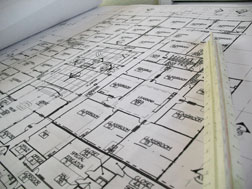I love it when I get to have discussions with other experienced estimators. We know the value of our profession to the industry. No other profession has as much responsibility for making or breaking a project. While the Dept. of Labor shows that there are about 200,000 estimators in the U.S., when I work with some firms everyone is an estimator. I wonder how they were missed on the occupation survey.
 Short
|
Recently a regional owner contemplated a project. It had passed the initial budget proposed by the internal staff, working without the benefit of an estimator participating in the process. It did a lot of things correctly, soliciting budget quotes for the major equipment, talking with developers of similar projects and working up a 23-line item estimate for a project with a budget of $7 million. Not bad for a concept or feasibility when you do not want to spend the time on a definitive budget. The directors tentatively approved the project for continued development and requested a definitive budget.
The next stage was to prepare a more definitive estimate and this is where we became involved in the budgeting process. This version of the estimate had a concept layout/sketch of the facility arrangement (not to scale, by the way). It came with a listing of the major equipment required. But only about two-thirds of the equipment was identified. Equipment and other vendor sources were identified from the previous exercise. Unfortunately, the sizing of the equipment changed from the previous concept to the current concept.
By the way, this is typically the process in early conceptual stages of a project. Scope and configurations change and the pricing needs to be revised accordingly. This is why proper estimating is not a one-shot effort at cost control but a continuing process through the design life of a project.
At this preliminary stage a work breakdown structure was established to provide a means to estimate the project and to provide for scope and cost control on subsequent estimates should the project become reality. This is something that needs to be established at the very beginning of the project. I have found that the CSI format (16 division, soon to be who-knows-how-many divisions) lends itself to this process. The divisions and subdivisions enable the estimator to define the contents of the estimate at the early stages of the project like this. I also find it vastly superior to the Master Format used by some firms.
This particular estimate of the project resulted in a project estimate of a little over $10,000,000 with the major differences in scope-based costs. While the original estimate had the correct amounts for the major equipment and features, it missed the supporting facility costs by a wide margin. The owner did not take into account the supporting infrastructure required for the major components. There was also a large variance between the indirect owner-related costs on the initial budget versus this version.
 Greg Randles – FOTOLIA
|
When we gave the client our estimate, all of a sudden our client contacts became estimators!
They just could not be $3 million dollars over the "budget." The project could not cost that much. Fencing can't be that expensive. Piping can't be that much. I can build a building for less than what you have in the estimate. These comments and more came from our client's newly minted "estimators" on the project. Yes, fencing is that expensive — it is 8 ft. high with 3 strands of barbed wire. It has three, 20-ft.-high powered gates with electronic controls. What type of fencing did you have in mind for the project? If it is different we can change the price.
Yes the piping is that much. It is copper, stainless and steel pipe. Are there some other materials that will be suitable for your process? If so, the prices can change.
Is the building you were thinking of a shed or is it an industrial building that holds all of your process equipment. It has floor loadings that keep the costs up. If this is not what is needed, the prices can be revised.
While we listen to our client requirements and their comments, it is not necessarily appropriate to change prices based upon their wish to lower the budget. If that's what the owner wants, the scope must be reduced. If a higher budget is desired add scope to the project. It's all pretty straight forward from an estimator's perspective.
Don L. Short II is president of Tempest Company, an Omaha, Neb.-based consultant, and an estimator certified by the American Society of Professional Estimators. He can be reached by phone at 1-888-334-3332 and by email at donshort@tempestcompany.com.
To comment on this article please email ENR_Web_Editors.

Post a comment to this article
Report Abusive Comment